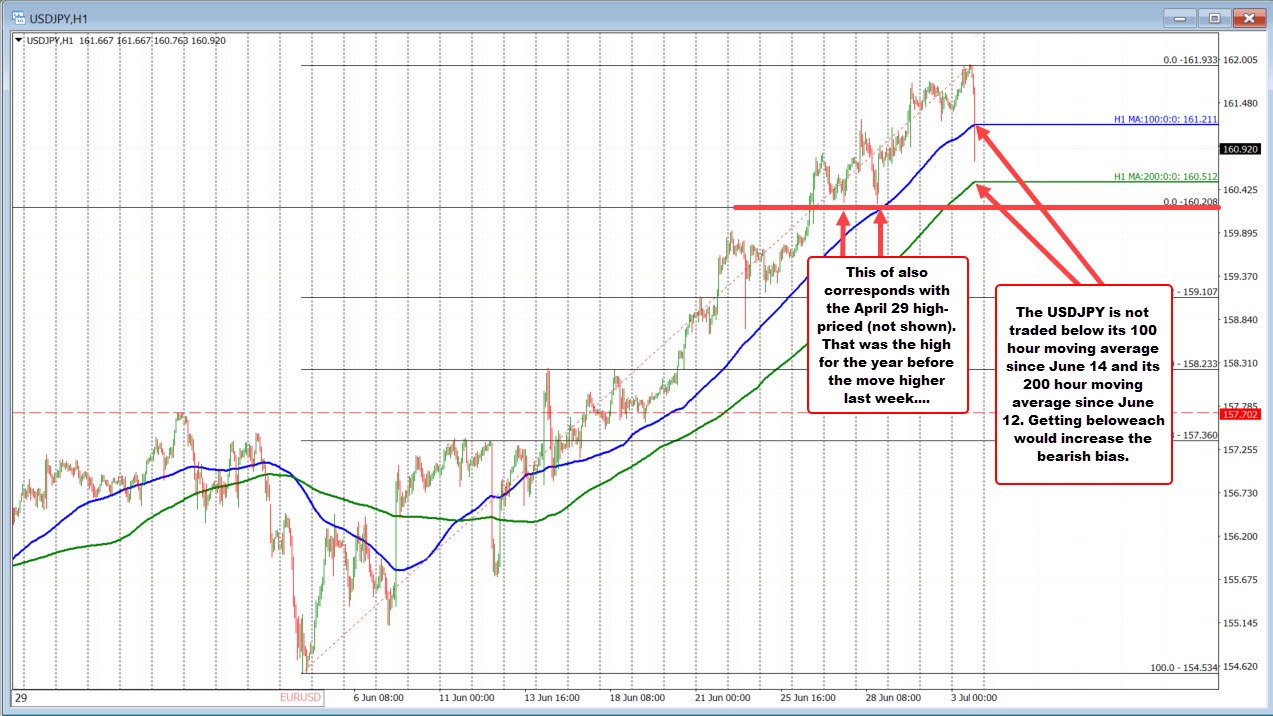The Impact of Weaker ISM Nonmanufacturing Data on USDJPY
USDJPY Movement
The US dollar experienced a significant decrease following the release of the weak ISM nonmanufacturing data, marking its lowest level since the pandemic. This decline was particularly evident in USDJPY trading. The currency pair fell below its 100-hour moving average at 161.211 and is heading towards its 200-hour moving average at 160.512. Notably, the price has not dropped below the 100-hour moving average since June 13 and the 200-hour moving average since June 12. Staying below these levels indicates a more bearish outlook, with another crucial level being the 160.21 mark.
Impact on Individuals
For individual traders and investors, the weakening of the USDJPY pair could have both positive and negative implications. A lower USDJPY exchange rate means that the US dollar is depreciating against the Japanese yen, making Japanese exports more expensive for American consumers. On the other hand, it can make Japanese imports more affordable for US businesses and consumers. This shift in currency values can influence international trade decisions and impact personal finances for individuals holding investments in the foreign exchange market.
Global Ramifications
The movement of the USDJPY pair post the weaker ISM nonmanufacturing data also has broader implications on the global economy. For example, a weaker US dollar tends to boost exports and economic growth in the United States by making American goods more competitive in international markets. Conversely, a stronger Japanese yen could potentially harm Japanese exporters who rely on overseas sales for revenue. The fluctuation in currency values between the US dollar and the Japanese yen can have ripple effects on other major currencies and global trade patterns.
Conclusion
In conclusion, the recent decline in the USDJPY pair following the release of the weaker ISM nonmanufacturing data highlights the interconnected nature of currency markets and the potential impact on individual traders and the global economy. It is essential for investors to stay informed about economic indicators and market trends to make informed decisions and navigate the ever-changing landscape of foreign exchange trading.





